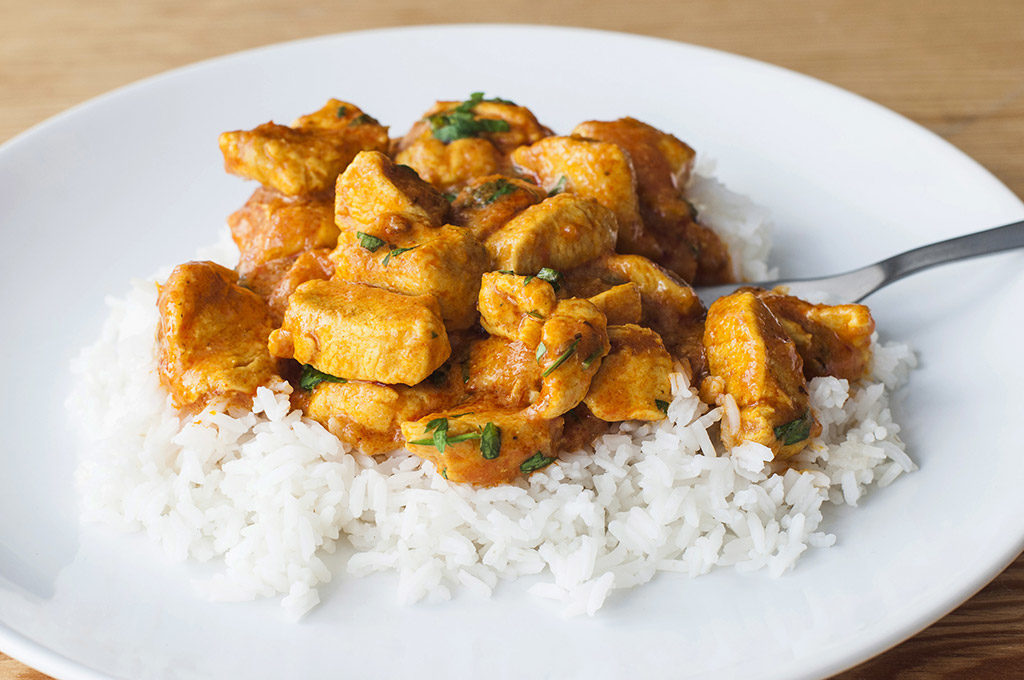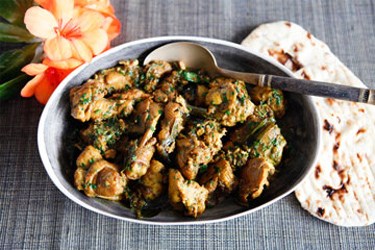This classic Fijian curry is unlike a typical Indian curry with its subtle flavours and much less chilli heat. Its origins date back to 1879 when the first indentured labourers arrived from Kolkata, India – only to find that Fiji had very few herbs and spices. They were forced to adapt their motherland recipes with the barest of spices but included one regional ingredient they found in abundance – coconut. Chef Seeto nicknamed this recipe, “Grandma’s Chicken Curry” as it has been handed down through generations. Upon arrival of the Chinese to Fiji, the local recipes were further adapted to include light soy sauce as an alternative to salt. Today’s most common version of the Fijian curry are often bereft of starch and vegetables and are mostly cooked with bone-in meats including chicken, lamb and goat.
| 1 whole chicken, skin-on, chopped into bite-sized pieces | |
| 2 large onions, chopped fine | |
| 4 cloves fresh garlic, chopped fine | |
| 1 Tbsp fresh ginger, grated fine | |
| 2 teaspoon cumin seeds | |
| 2 teaspoon black mustard seeds | |
| 2 Tbsp ground masala powder (mild) | |
| 1 Tbsp ground turmeric powder | |
| 2 Tbsp curry leaves (fresh or dried) | |
| 1 Tbsp ghee or salted butter | |
| 1/2 cup light soy sauce | |
| sea salt (for seasoning at the end) | |
| 3 cups coconut milk (fresh or tinned) | |
| 1 Tbsp fresh coriander (cilantro) root & stem, keep leaves for garnish | |
| 1-2 fresh red chilli (optional) |
This classic Fijian curry is unlike a typical Indian curry with its subtle flavours and much less chilli heat. Its origins date back to 1879 when the first indentured labourers...
| 1. | Cut chicken in bite-sized pieces, leave skin-on for enhanced flavour |
| 2. | Add the sealed chicken pieces and tomatoes, mix thoroughly with the curry paste |
| 3. | Once the liquid in the pot begins to evaporate, add the coconut milk. If the milk begins to thicken before the chicken is fully cooked, add a little water |
| 4. | In a large pot on medium heat, fry curry leaves, cumin and mustard seeds in ghee until seeds begin to pop |
| 5. | Add onions, chilli, garlic & ginger. Cook until onions translucent. |
| 6. | Add the masala and turmeric powders. Cook to form a paste (add a little more ghee or oil if too dry) |
| 7. | Bring the curry to the boil and simmer for a further 10 minutes |
| 8. | Check the seasoning. A little sea salt may be needed. |
| 9. | Garnish with chopped tomato and coriander leaves |
| 10. | Serve with steamed rice and roti |



/rating_on.png)
/rating_half.png)
/rating_off.png)